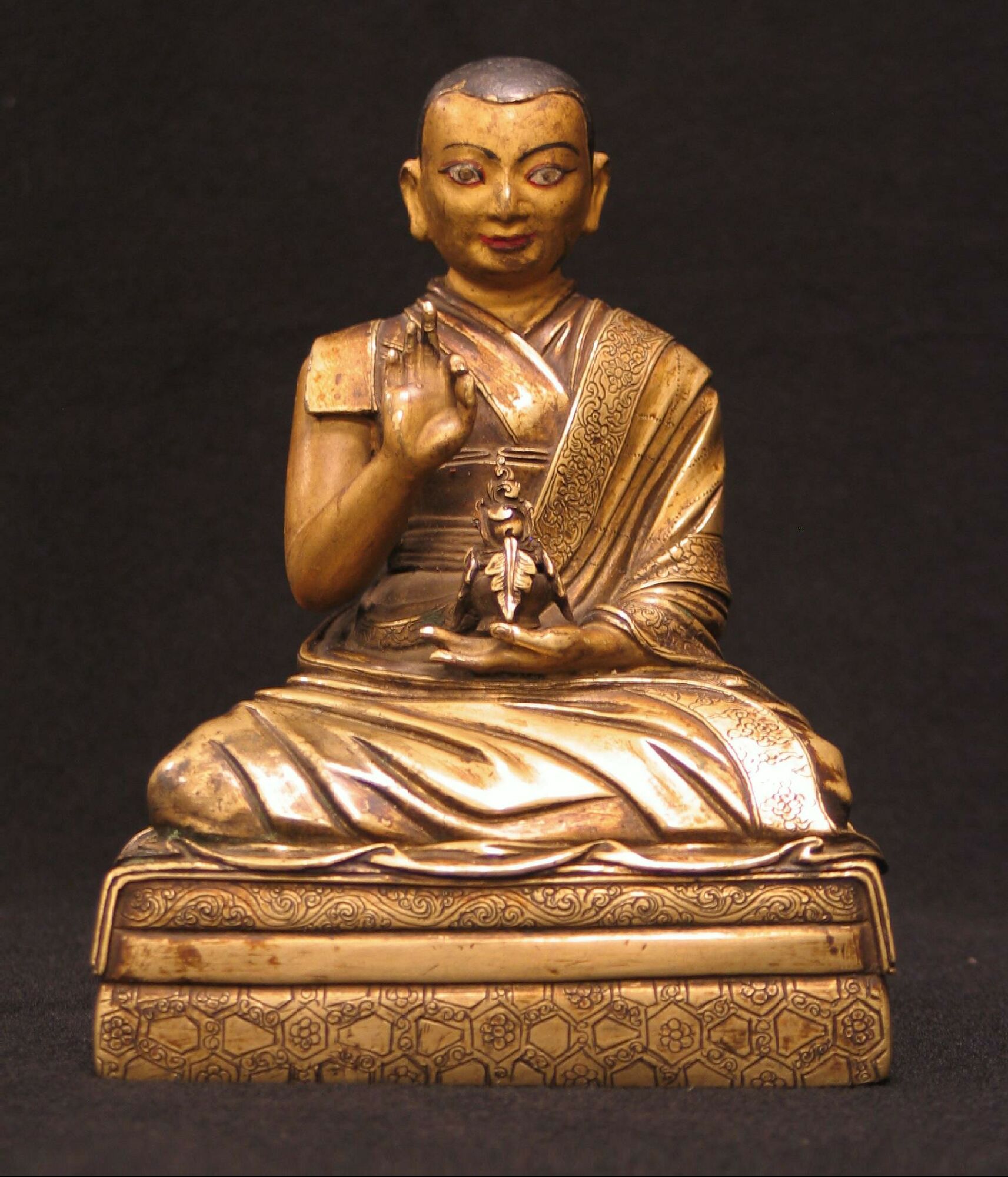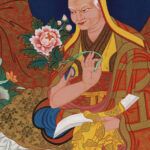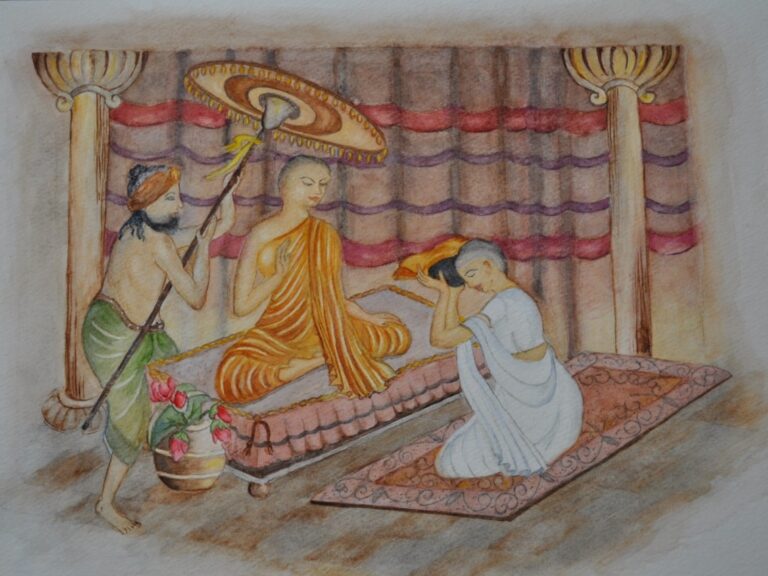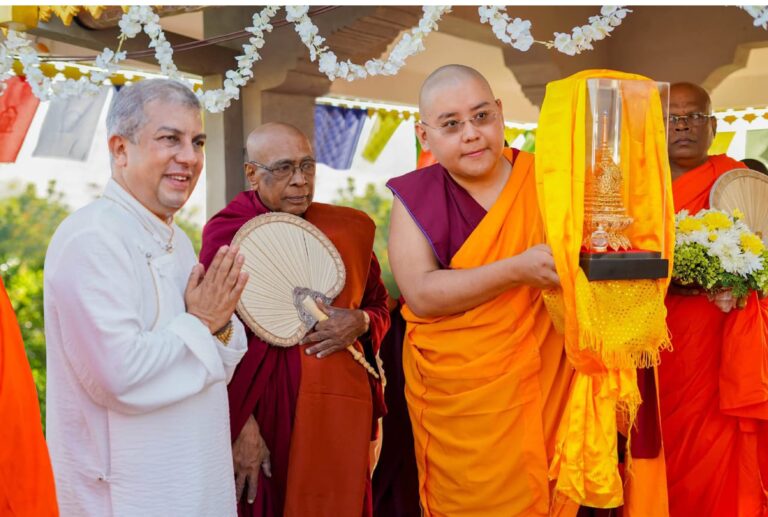The Fifth Dalai Lama, Lobsang Gyatso – The Great Fifth The Fifth Dalai Lama, Ngawang Lobsang Gyatso, often revered as the Great Fifth, was born in 1617 in Lhoka Chingwar Taktse, south of Lhasa, to Dudul Rabten and Kunga Lhanzi. His recognition as the reincarnation of the Fourth Dalai Lama came during a period of …
The Fifth Dalai Lama, Lobsang Gyatso – The Great Fifth
The Fifth Dalai Lama, Ngawang Lobsang Gyatso, often revered as the Great Fifth, was born in 1617 in Lhoka Chingwar Taktse, south of Lhasa, to Dudul Rabten and Kunga Lhanzi.
His recognition as the reincarnation of the Fourth Dalai Lama came during a period of intense political turmoil in Tibet. At the time, the country was embroiled in conflict between the Tsangpa dynasty, supported by the Karma Kagyu school, and the rising Gelug school, which had gained favor with certain Mongol factions. This civil strife not only divided the Tibetan Buddhist schools but also fragmented political authority across the region. Recognizing the spiritual significance of the young boy from Chong-Gya, Sonam Choephel, chief attendant of the previous Dalai Lama, visited him and showed him personal relics of the Fourth Dalai Lama, which the boy immediately identified as his own. Fearing political instability, Sonam Choephel kept the discovery secret until the environment was safer.
When conditions stabilized, the boy was taken to Drepung Monastery, where he was ordained by the Third Panchen Lama, Lobsang Chogyal, and received the name Ngawang Lobsang Gyatso.
The Fifth Dalai Lama’s enthronement in 1642 marked a turning point in Tibetan history. Backed by Gushir Khan, the chief of the Qoshot Mongols, he was installed as both the spiritual and political leader of Tibet. This event signified the unification of Tibet under the Ganden Phodrang government and the rise of the Gelug school to dominance—effectively ending the long-standing conflict between rival factions. The support of Gushir Khan’s military was essential in defeating the Tsangpa rulers and consolidating power under the Dalai Lama’s leadership.
In 1645, he initiated the construction of the Potala Palace on Red Hill, the historical site of Songtsen Gampo’s ancient fort. Symbolizing the rebirth of centralized Tibetan power, the Potala Palace project reflected the scope of his vision. The structure took forty-three years to complete, ultimately becoming one of Tibet’s most iconic landmarks.
In 1649, the Manchu emperor Shunzhi invited the Dalai Lama to Peking (Beijing). The Dalai Lama’s journey was marked by great ceremony, including a formal escort of three thousand cavalry. Upon arrival, he was housed in the Yellow Palace, built especially for him. During their official meeting, the two exchanged titles in a display of mutual recognition and diplomatic respect. He returned to Tibet in 1653.
Following the deaths of Gushir Khan and Sonam Choephel in 1655, the Dalai Lama appointed Tenzin Dorjee, Gushir Khan’s son, as the new Mongol king, and Drong Mey-pa Thinley Gyatso as Desi (regent). In 1662, after the passing of Emperor Shunzhi, Kangxi ascended the throne. That same year, the Panchen Lama died at ninety-one. In 1665, at the request of Tashi Lhunpo Monastery, the Dalai Lama recognized a boy from Tsang as the Panchen Lama’s reincarnation, naming him Lobsang Yeshi.
An exceptional scholar and writer, the Great Fifth authored approximately 24 volumes of work covering history, poetry, philosophy, autobiography, and spiritual treatises. Among these was a significant autobiography, which remains a valuable primary source for Tibetan history. He established two schools: one for lay officials and one for monastic officials, where subjects like Mongolian, Sanskrit, astrology, poetry, and governance were taught.
His cultural and spiritual influence extended far beyond political administration. Deeply respected as a spiritual master, he also received teachings from the Nyingma tradition and even revealed “pure vision” teachings, reflecting his ecumenical approach to Tibetan Buddhism. He institutionalized the role of the Ganden Tripa as the official head of the Gelug school, thereby distinguishing religious authority from his own political role as Dalai Lama.
He passed away in 1682, at the age of sixty-five, before the completion of the Potala Palace. Demonstrating political foresight, he entrusted Sangya Gyatso, the new Desi, with overseeing the palace’s completion and advised keeping his death a secret—a plan that was successfully maintained for 15 years, until 1697. This allowed for the stabilization of the government and ensured a smooth transition to the Sixth Dalai Lama without foreign interference.
Known in history as the Great Fifth, Ngawang Lobsang Gyatso was more than a political unifier; he was a spiritual visionary, a prolific writer, and a cultural architect who profoundly shaped the course of Tibetan history.
References:
- Wikipedia contributors. (2025, May 20). Ganden Phodrang. Wikipedia. https://en.wikipedia.org/wiki/Ganden_Phodrang
- The Illusive Play: The Autobiography of the Fifth Dalai Lama. (2014). Translated by Samten Gyaltsen Karmay. Serindia Publications.
- A History of Tibet by the Fifth Dalai Lama of Tibet. (1995). Translated by Zahiruddin Ahmad. Indiana University Press. https://en.wikipedia.org/wiki/A_History_of_Tibet_by_the_Fifth_Dalai_Lama_of_Tibet
Get in Touch with Us
We’d love to hear from you—share your thoughts or ask a question!






